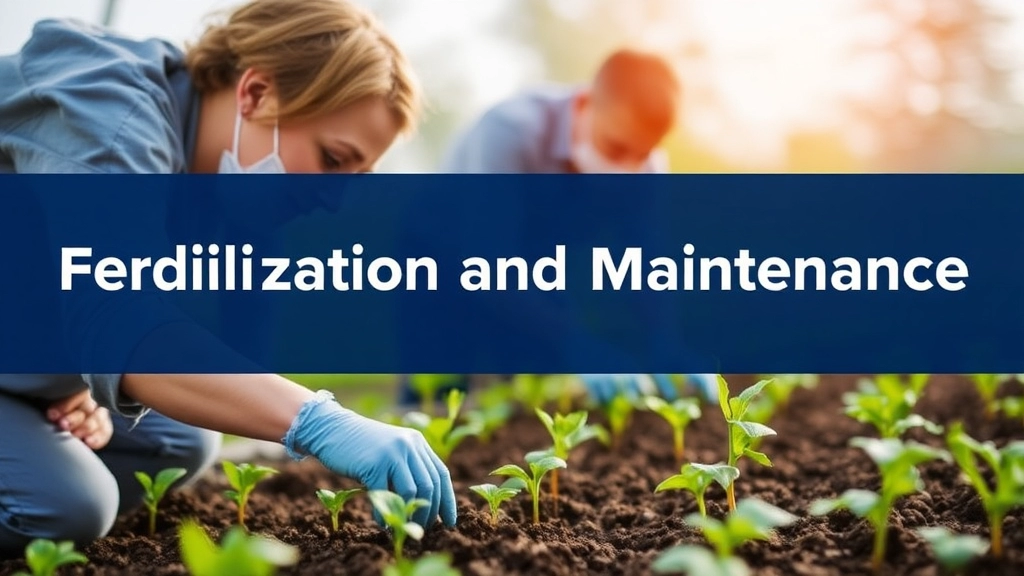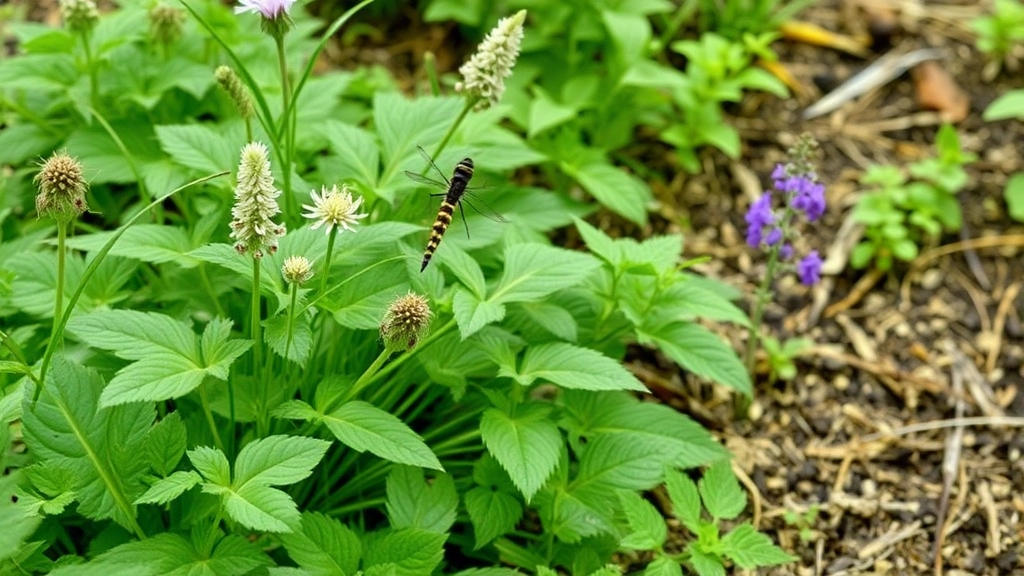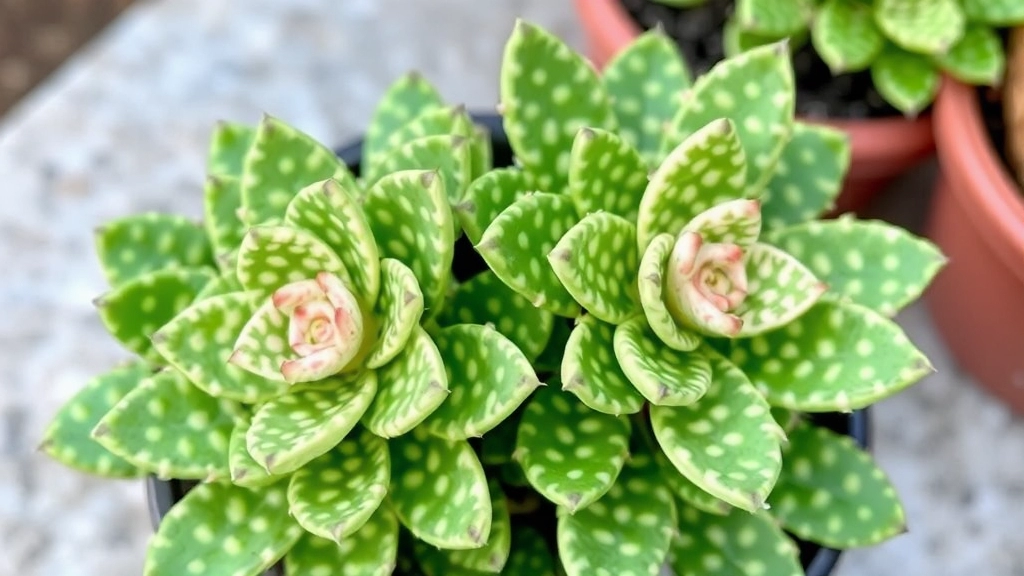Leopard Mother Of Thousands: A Unique Plant
If you’re fascinated by unique and low-maintenance plants, the Leopard Mother Of Thousands, also known as Kalanchoe Daigremontiana or Alligator Plant, is a must-have. This plant is famous for its easy propagation and rapid growth cycle, making it a favourite among both novice and seasoned gardeners. In this article, we’ll dive into everything you need to know to keep your Alligator Plant thriving.
Key Care Tips
From understanding its light and temperature needs to mastering the art of watering and soil preference, we’ll guide you through every step. Whether you’re growing it indoors in a container or managing its invasive tendencies outdoors, you’ll find practical tips here. Let’s get started on your journey to becoming a Leopard Mother Of Thousands expert!
Propagation and Growth Cycle
When considering the propagation and growth cycle of plants, many questions arise. How do I start new plants? What is the best way to ensure healthy growth?
Propagation is the process of creating new plants from various sources. This can be done through seeds, cuttings, or division. Each method has its unique benefits and challenges.
Methods of Propagation
- Seeds:
- The most traditional method.
- Requires patience as germination can take time.
- Offers a wide variety of plant options.
- Cuttings:
- Involves taking a part of a plant and encouraging it to root.
- Quick and often successful.
- Ideal for many houseplants.
- Division:
- Suitable for perennials.
- Involves splitting a plant into smaller sections.
- Promotes healthier growth by reducing overcrowding.
Growth Cycle
Understanding the growth cycle is crucial for nurturing your plants effectively.
- Germination: The stage where seeds sprout and begin to grow.
- Vegetative Stage: The plant focuses on growing leaves and stems.
- Flowering Stage: The plant produces flowers, which can lead to fruit or seeds.
- Dormancy: A resting phase for many plants, often in winter.
Each stage requires different care, especially regarding light, water, and nutrients. For instance, if you’re interested in learning how to propagate Kalanchoe from leaves, there are specific steps you can follow to ensure success. Additionally, understanding why your Kalanchoe is not flowering can help you make the necessary adjustments to promote blooming.
Light and Temperature Requirements

Are you struggling to keep your plants thriving?
Understanding their light and temperature needs can be a game changer.
Light Requirements
Most plants have specific light preferences, and getting this right is crucial.
- Direct Sunlight: Some plants, like succulents, love basking in full sun for several hours a day.
- Partial Shade: Others, like ferns, prefer dappled light and can get scorched by too much sun.
- Low Light: If you’re in a dim corner, don’t fret! Some plants, like pothos, can thrive with minimal light.
Tip: Observe your plant for a week. If the leaves are yellowing or dropping, it might not be getting enough light.
Temperature Preferences
Temperature plays a big role in plant health too.
- Tropical Plants: They love warmth! Aim for temperatures between 18°C to 27°C.
- Cool-Weather Plants: Think of leafy greens; they thrive in cooler temps, around 10°C to 20°C.
Quick Check: Keep an eye on sudden temperature changes. Drafts or heating vents can stress your plants.
Seasonal Changes
As the seasons shift, so do your plants’ needs.
- Summer: They might need more water and light.
- Winter: Some plants may go dormant and require less light and water.
Watering Techniques and Soil Preference
Are you struggling to find the right balance when it comes to watering your plants?
Understanding the watering techniques and soil preferences is crucial for the health of your greenery.
Watering Techniques
- Consistency is Key: Regular watering helps maintain moisture levels. Aim for a consistent schedule that suits your plant type.
- Check Soil Moisture: Before watering, check the soil’s moisture level. Stick your finger about an inch into the soil; if it feels dry, it’s time to water.
- Water Deeply: When you do water, ensure it’s deep enough to reach the root zone. This encourages roots to grow deeper into the soil.
- Avoid Overwatering: Too much water can lead to root rot. Make sure your pots have drainage holes to prevent waterlogging.
- Morning Watering: Watering in the morning allows plants to absorb moisture before the heat of the day, reducing evaporation.
Soil Preference
Choosing the right soil is just as important as watering techniques.
Fertilization and Maintenance

As we delve deeper into the care of your plants, fertilization and maintenance play a crucial role in their overall health and vitality.
Many plant enthusiasts often wonder how to provide the right nutrients without overwhelming their plants.
Understanding Fertilization Needs
Plants require a balanced diet to thrive, and this is where fertilization comes in.
- Types of Fertilizers:
- Organic Fertilizers: Options like compost, fish emulsion, and bone meal enrich the soil naturally.
- Synthetic Fertilizers: These provide quick nutrients but should be used with caution to avoid nutrient burn.
- NPK Ratio:
- Look for fertilizers with a balanced NPK ratio (Nitrogen, Phosphorus, Potassium) tailored to your plant type.
- For example, leafy greens may benefit from higher nitrogen content, while flowering plants thrive with more phosphorus.
- Frequency of Application:
- Generally, fertilize every 4-6 weeks during the growing season.
- Reduce or stop fertilization in the dormant season.
Maintenance Practices
Proper maintenance goes hand-in-hand with fertilization. Here are some essential tips:
- Soil Health:
- Regularly check soil pH and nutrient levels.
- Consider soil amendments like peat moss or perlite to improve drainage and aeration.
- Mulching:
- Apply organic mulch to retain moisture and suppress weeds.
- This also adds nutrients back into the soil as it decomposes.
- Monitoring Plant Health:
- Keep an eye out for signs of nutrient deficiency, such as yellowing leaves or stunted growth.
- Adjust your fertilization routine accordingly.
Container Gardening and Repotting
Transitioning from understanding the essential needs of your plants, let’s delve into the practical aspects of container gardening and repotting.
Why Choose Container Gardening?
Container gardening offers flexibility and control that traditional gardening may not provide.
- Space Efficiency: Ideal for small gardens or urban settings.
- Mobility: Easily relocate pots for optimal light and temperature.
- Soil Control: Tailor soil mixes to specific plant needs.
However, repotting is a crucial aspect that ensures your plants thrive.
When to Repot?
Knowing when to repot can save your plants from stress. Here are key indicators:
- Root Bound: Roots are growing out of the drainage holes.
- Stunted Growth: The plant is not growing as expected.
- Soil Degradation: Soil appears compacted or depleted of nutrients.
How to Repot?
Repotting doesn’t have to be daunting. Follow these simple steps:
- Choose the Right Pot: Select a pot that is 1-2 inches larger in diameter.
- Prepare Fresh Soil: Use high-quality potting mix suitable for your plant type.
- Gently Remove the Plant: Carefully take the plant out of the old pot, loosening the roots if necessary.
- Position and Fill: Place the plant in the new pot and fill with fresh soil, ensuring it sits at the same depth.
- Water Thoroughly: After repotting, water well to help settle the soil.
Best Practices for Container Gardening
To maximise your container gardening experience, consider these tips:
- Drainage: Ensure pots have drainage holes to prevent root rot.
- Watering: Containers dry out faster; check moisture levels regularly.
- Fertilisation: Use slow-release fertilisers to provide nutrients over time.
Incorporating these practices will enhance your gardening journey, ensuring your plants flourish. For more specific advice, check out our complete guide to caring for Kalanchoe Mother of Millions and learn about the Kalanchoe Paddle Plant care tips for thriving growth.
Outdoor and Invasive Growth Considerations

When you’re thinking about growing plants outdoors, have you ever wondered how they might behave in your garden?
Outdoor growth can be a real game-changer for your plants, but it comes with its own set of challenges, especially when it comes to invasive species.
Understanding Invasive Growth
Invasive plants can take over your garden and choke out your beloved plants. Here’s what you need to know:
- Identify Invasive Species: Familiarise yourself with local invasive plants. A quick online search or a chat with local gardeners can help.
- Control Measures: Regularly check your garden for any invasive species and remove them promptly. This can save your plants from being outcompeted for resources.
- Native Alternatives: Consider planting native species that thrive in your area. They’re less likely to become invasive and will support local wildlife.
Outdoor Growth Tips
If you’re planning to grow plants outdoors, here are some handy tips:
- Choose the Right Location: Ensure your plants get enough sunlight and protection from harsh winds.
- Soil Testing: Test your soil to understand its pH and nutrient levels. This will help you choose the right plants for your garden.
- Mulching: Use mulch to retain moisture and suppress weeds. It’s like a cozy blanket for your plants!
Watering and Care
Outdoor plants often require different care than indoor ones. Here’s how to keep them thriving:
- Watering Schedule: Set a consistent watering schedule, especially during dry spells.
- Observe Growth: Keep an eye on your plants. If they’re wilting or looking unhealthy, it might be time to reassess your care routine.
Pruning and Pest Control
As we delve into the essential practices of pruning and pest control, it’s vital to understand how these methods can significantly enhance the health and appearance of your plants.
Why Pruning Matters
Pruning is not just about aesthetics; it plays a crucial role in promoting healthy growth. Here’s why you should consider it:
- Encourages New Growth: Regular pruning stimulates the production of new shoots, leading to a fuller plant.
- Removes Dead or Diseased Wood: This helps prevent the spread of disease and keeps your plants looking tidy.
- Improves Air Circulation: Better airflow reduces the risk of fungal infections.
Effective Pruning Techniques
To get started, here are some straightforward tips for pruning:
- Use Clean, Sharp Tools: This prevents the transfer of diseases.
- Prune at the Right Time: Late winter or early spring is usually ideal.
- Cut at an Angle: This helps water runoff and reduces rot.
Understanding Pest Control
Pest control can seem daunting, but with the right knowledge, it becomes manageable. Common pests include aphids, spider mites, and whiteflies. Here’s how to tackle them effectively:
- Regular Inspections: Check your plants weekly for any signs of infestation.
- Natural Remedies: Consider using neem oil or insecticidal soap as eco-friendly options.
- Encourage Beneficial Insects: Ladybugs and lacewings can help keep pest populations in check.
Integrated Pest Management (IPM)
Adopting an Integrated Pest Management approach can be beneficial. This combines various strategies for effective pest control:
- Cultural Controls: Rotate crops and maintain healthy soil.
- Mechanical Controls: Use barriers like row covers to protect plants.
- Chemical Controls: If necessary, opt for targeted pesticides to minimize harm to beneficial insects.
By keeping your plants pruned and controlling pests effectively, you ensure a thriving garden. For more detailed advice on plant care, check out our expert tips for healthy growth and our comprehensive guide to fuzzy Kalanchoe care.
Toxicity and Pet Safety
Have you ever wondered if your beloved plants are safe for your furry friends?
It’s a valid concern, especially if you have curious cats or playful pups around.
Understanding Plant Toxicity
Many popular houseplants can be toxic to pets, leading to symptoms like vomiting or lethargy.
Here’s a quick list of common plants that are harmful to pets:
- Lilies: Super toxic to cats; can cause kidney failure.
- Pothos: Causes oral irritation and vomiting in dogs and cats.
- Sago Palm: Extremely toxic; ingestion can lead to liver failure.
- Philodendron: Can cause swelling and irritation in the mouth.
Keeping Your Pets Safe
To keep your pets safe while enjoying your green friends, consider these tips:
- Research Before Buying: Always check if a plant is pet-friendly before adding it to your collection.
- Placement Matters: Keep toxic plants out of reach. High shelves or hanging pots can be a good idea.
- Educate Yourself: Familiarise yourself with symptoms of plant poisoning. Quick action can save your pet.
What to Do If Your Pet Gets Into a Toxic Plant
If you suspect your pet has ingested a toxic plant, don’t panic.
- Contact Your Vet: They can provide the best advice based on the situation.
- Take Notes: Know the plant type and how much your pet might have eaten.
The Importance of Pet-Safe Choices
Choosing pet-safe plants not only protects your furry friends but also gives you peace of mind.
Some great pet-friendly options include:
- Spider Plant: Easy to care for and non-toxic.
- Bamboo Palm: Adds a tropical vibe without the risk.
- Boston Fern: A lush addition that’s safe for pets.
If you’re interested in learning more about plant safety, you might want to explore whether Kalanchoe is poisonous to humans and the toxicity risks of Kalanchoe Pink Butterflies.
FAQs on Plant Care
What are the light requirements for different plants?
Different plants have varying light needs. Succulents thrive in direct sunlight, ferns prefer partial shade, and pothos can grow in low light conditions. Observe your plant for signs like yellowing or dropping leaves to determine if it’s getting the right amount of light.
How does temperature affect plant health?
Temperature is crucial for plant health. Tropical plants prefer warmth (18°C to 27°C), while cool-weather plants like leafy greens thrive in cooler temperatures (10°C to 20°C). Watch out for sudden temperature changes, as drafts or heating vents can stress your plants.
How should I adjust plant care with seasonal changes?
Seasonal changes affect plant needs. In summer, plants may require more water and light, while in winter, some may go dormant and need less light and water. Adjust your care routine accordingly.
What types of fertilizers should I use?
Choose between organic fertilizers like compost and fish emulsion, or synthetic fertilizers for quick nutrients. Ensure the fertilizer has a balanced NPK ratio suitable for your plant type. Generally, fertilize every 4-6 weeks during the growing season and reduce or stop during dormancy.
What are essential maintenance practices for plant health?
Maintain soil health by checking pH and nutrient levels, and consider soil amendments for better drainage. Use organic mulch to retain moisture and suppress weeds. Regularly monitor your plants for signs of nutrient deficiency and adjust your care routine as needed.
How can I manage invasive plant growth in my garden?
Identify and remove invasive species promptly to prevent them from overtaking your garden. Opt for native plants that are less likely to become invasive and support local wildlife. Regularly monitor your garden and take action as needed.
What tips should I follow for growing plants outdoors?
Choose the right location with adequate sunlight and protection from harsh winds. Test your soil to understand its pH and nutrient levels. Use mulch to retain moisture and suppress weeds. Set a consistent watering schedule and observe your plants for signs of stress.
How often should I water my outdoor plants?
Set a consistent watering schedule, especially during dry spells. Monitor your plants for signs of wilting or unhealthy growth to determine if adjustments are needed.
References
-
Understanding Plant Light Requirements – Gardening Know How
-
Understanding Plant Fertilizer – The Spruce
-
Invasive Species – USDA Forest Service
